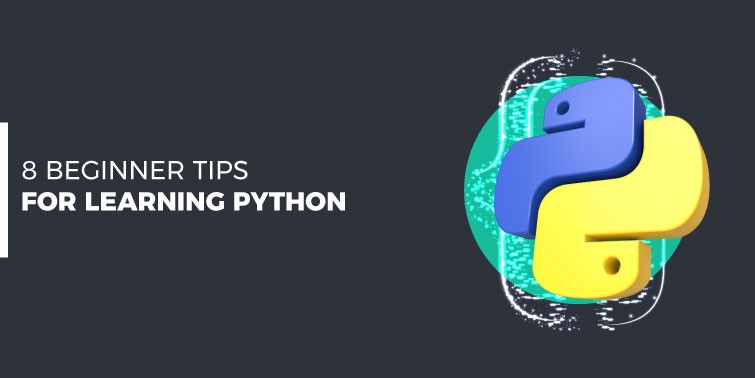Backend Development: a Comprehensive Guide for Beginners
Behind the sleek interfaces and seamless user experiences lies the work of backend developers. In this comprehensive guide, we unveil backend development as a profession, providing a roadmap for those eager to start a career as a backend developer.
Who Is the Backend Developer?
Backend development involves managing the non-visible aspects of a website, focusing on the data layer of an application. The responsibilities of a backend developer encompass tasks such as retrieving data, performing calculations, and organizing information before it is transmitted to the front end or client side.
As an example let us consider searching for an online shop for a product. The backend developer is responsible for crafting the logic that identifies items relevant to your search. And when you add products to your cart, the backend is where calculations for pricing, tax, shipping costs, etc., take place.
These routine activities, from sharing reels with friends to transferring money and online shopping, rely on the expertise of backend developers. Often unrecognized, they play a crucial role in ensuring a smooth and seamless user experience.
Now that we know the general role of backend development, let’s take a closer look at the specific tasks they perform.
What Does a Backend Developer Do?
The tasks of a backend developer may vary depending on the size and systems in place at a company. In general, they are responsible for the creation, maintenance, testing, and debugging of a website, covering core application logic, databases, data and application integration, APIs, and more.
The backend is composed of three essential parts: the server, the application, and the database. These components operate continuously in the background, even if users don’t directly see or interact with them.
Here are the main tasks backend developers do regularly:
- Database creation and data structure maintenance
- Utilizing backend frameworks (e.g., Node.js)
- Implementing web server technologies (HTTP, REST, and SOAP)
- Integrating with cloud computing platforms (Amazon Web Services, Azure, etc.)
- Programming in server-side languages (e.g., Python, Ruby)
- API integration
- Implementing security settings to prevent hacks and data leaks
- Generating reports with analytics and statistics on website usage, errors, and efficiency
- Backing up and restoring website and user data
To make it clearer, let us see the differences between the frontend and the backend. The frontend pertains to the portion of the website users interact with—the user interface, which includes menus, buttons, and all visual elements. Think of it as a collaborative effort: the frontend initiates a request, the backend retrieves the data, and the frontend decides how to present it visually.
The Skills and Knowledge Required for Backend Developers
Proficiency in Programming Languages:
- At the core of backend development is programming. The most popular languages in backend are Python, Java, Ruby on Rails, PHP, and TypeScript. While a broad understanding is beneficial, delving deeply into one, like TypeScript, can set you apart.
Mastery in Databases:
- Databases are where data are stored. Proficiency in at least one of various systems, such as MySQL, PostgreSQL, MongoDB, and Oracle, is essential for backend developers. This involves a comprehensive understanding of data modeling, intricate relationships, and advanced querying techniques—from devising efficient schemas to optimizing queries and ensuring data integrity.
Web Server Management & Deployment:
- The next most important part of backend architecture is the servers. They are the highways for information flow on the internet. They handle requests and deliver content to users. Settling up the server, fine-tuning, and regular maintenance are the duties of backend experts. Tools like Apache and Nginx, coupled with cloud platforms like AWS or Google Cloud, should be integral to your toolkit.
Middleware – The Digital Adhesive:
- Middleware serves as a bridge between different software parts, making communication and data flow smooth. Knowing how middleware works helps with tasks like handling requests, managing responses, ensuring security, and storing data for quick access. Being good at middleware means you can build applications that are organized, efficient, and easy to upgrade.
API Creation & Management:
- APIs act like connectors in the software world. Being skilled in creating and overseeing APIs that are efficient, safe, and easy to maintain is important. This skill is vital for blending different services, helping microservices communicate, and making APIs accessible for a wider range of applications.
The World of Microservices Architecture:
- In this setup, a big application is broken down into smaller, manageable parts called microservices. Each microservice works on its own, talking to others mainly through APIs or message brokers. Understanding this way of organizing things brings advantages like being able to grow easily, simpler upkeep, and faster updates.
Starting Your Journey as a Backend Developer
Becoming a backend developer doesn’t follow a singular prescribed path. What matters most is building the skills necessary for the job. Whether through a formal route like university education, self-guided online learning, or participating in a structured web development bootcamp, there are various valid options.
Considering learning at least the fundamentals of frontend development is a good practice, starting with full-stack development skills can be advantageous. As you deepen your knowledge and identify your interests, you can always specialize further in backend development. Numerous full-stack programming courses and development bootcamps.
To start with the basics, consider the Computer Science Fundamentals course offered by BDG. This is a comprehensive hands-on course to help newbies in the tech world gain proficiency in the basics of IT and programming.
Job Opportunities and Career Paths
Backend developers are currently in high demand across various industries, and optimizing your approach to the job market can significantly enhance your job search.
Popular Job Portals and Platforms for Backend Developers
Explore backend development opportunities on widely used job portals such as LinkedIn, Indeed, and Stack Overflow. To increase visibility, tailor your resume with relevant keywords and maintain regular profile updates.
Leverage LinkedIn and Professional Networking
Construct a robust LinkedIn profile that highlights your backend skills, projects, and endorsements. Expand your professional network by connecting with individuals in the field, participating in relevant groups, and engaging in discussions.
Preparing for Backend Developer Interviews
Backend development interviews typically delve into discussions about system architecture, database design, and problem-solving. Thorough preparation is essential to showcase your expertise effectively.
Technical Assessments
Excel in technical assessments by practicing coding challenges on platforms like HackerRank and LeetCode. Brush up on algorithms, data structures, and database concepts to perform well in these assessments.
Project Showcase
When you’re in interviews, get ready to talk in detail about your backend projects. Explain the choices you made in designing how things work, talk about how you set up your databases and describe how your backend solutions make the whole application work. This detailed discussion not only shows off your technical skills but also proves you can make a big impact on projects.
Career Progression
Your career as a backend developer may advance in so many different ways. Think of backend development as a vast landscape with diverse specializations – database administration, DevOps, cloud computing, etc.
You can gain more expertise in one or several aspects of backend, equipping yourself with the knowledge of tools like Django, Spring Boot, or Express.js, seeing them as instruments that fine-tune your craft.
Another path of career development you would consider is the possibility of assuming leadership roles. In these positions, you not only guide projects but become a mentor, sharing the wisdom gained from your journey with aspiring developers.
Continuous Learning and Resources
In backend development, staying abreast of evolving technologies is crucial. Cultivate a mindset of continuous learning to remain competitive and relevant in the ever-changing tech landscape. Consider pursuing certifications or advanced degrees in backend development, cloud computing, or related fields. Formal education can deepen your knowledge and open doors to specialized roles.
To stay informed of technological advancements, subscribe to newsletters, follow industry blogs, and attend conferences to stay informed about the latest trends in backend development. Platforms like Medium, Dev.to, and Hacker News are excellent resources for staying updated. Another great source of information would be BDG’s blog.
As you progress in your career, consider mentoring junior developers or participating in knowledge-sharing initiatives. Sharing your experiences and insights not only benefits others but also reinforces your understanding of backend development concepts.
Is Backend Development Right for You? A Conclusion
Like any adventure, the answer lies in the alignment of your aspirations, and interests, and the thrill you find in unraveling the complexities of the digital landscape.
If you like coding, resolving complex problems, and creating something new in the digital world, then the backend may be your path. This profession is not merely about mastering languages or frameworks; it’s a dynamic expedition where continuous learning is your compass.




